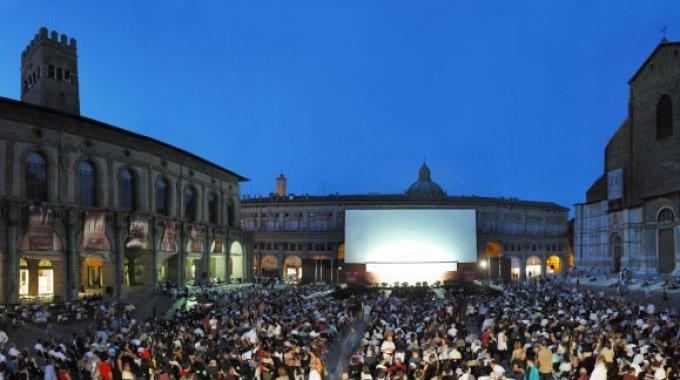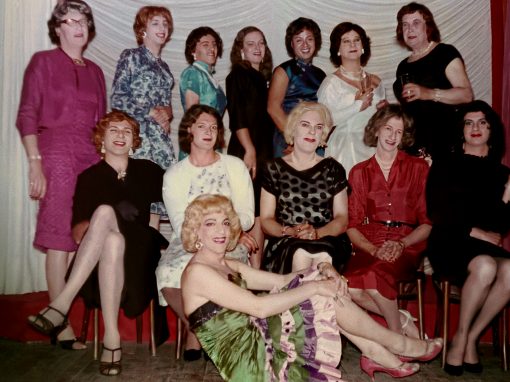My first visit to Il Cinema Ritrovato in Bologna turned to be a total film festival experience, more so than any other I’ve experienced. I travel annually to Toronto’s TIFF, and have attended festivals in cities like Rotterdam and Montreal but never before was I so strongly engaged with exploring the city itself, its streets and architecture, its restaurants, and witnessing its cultural life. In a nice scheduling touch, there were no screenings for a two-hour period during lunchtime, which permitted a leisurely meal with wine every day. And each night brought a public and festive piazza screening that was attended by hundreds — the series included Lola, The Grand Illusion, Point Blank, Lawrence of Arabia, and Chaplin, among others.
So, a half-dozen festival highlights:
(1) Sonnenstrahl (“Ray of Sunshine”, Pál Fejös, 1933). The only other film I’ve seen by the Hungarian Fejös is Lonesome (1927), made in Hollywood, an absolute stunner, with one of my favorite opening sequences in all of cinema. (Criterion is releasing it soon.) Sonnenstrahl, which he made in Austria, showed as part of a terrific program called “After the Crash: Cinema and the 1929 Crisis,” curated by festival artistic director Peter von Bagh. It’s a film about two young people, desperately poor, who meet on a bridge as they are about to commit suicide. We follow their struggle out of precarious straits and into a tenuous working-class existence. The film sets out to capture their small victories and little joys, even if abjection and disaster are often around the corner.
(2) Maldone (Jean Grémillon, 1927). The title character is a bargeman who inherits an estate, leaves the gypsy woman he is wooing, marries out of duty, and finds himself nearly driven mad by his bourgeois life. It’s a thrillingly inventive film, deeply marked by its French impressionist moment, that puts an arsenal of effects to work: startling compositions and changes in shot scale, free cutting, expressive camera movement (including hand-held), unexpected super-impositions, and so on. Grémillon achieves a musical dynamism by modulating between passages of contrasting rhythm. Hubert Niogret of Positif corroborates the existence of this musical quality: “Grémillon began his career by playing background piano for silent films, and he himself composed the music for his later films, all documentaries.” David Cairns also observes: “…surprising how many classic French films take to the waterways: L’Atalante, of course, and also Gance’s La Roue. (Britain offers The Bargee and Young Adam. America doesn’t do canals.)”
(3) Man’s Castle (Frank Borzage, 1933). Hervé Dumont, former head of the Swiss Film Archive and author of the most sizable study of Borzage’s films, was at hand to give a lengthy and useful introduction. He characterized the two leads, played by Spencer Tracy and Loretta Young, as “aristocrats of the soul.” The film is about two dirt-poor lovers who live in a shanty-town sardonically named “Hooverville”. For Borzage, they are a world apart from everyone else, and not always for the better. The man is bitter, charismatic, self-loathing, cruel and (way down) hyper-sensitive; the woman is impossibly generous, un-possessive, beatific and resigned. This is a powerfully poetic, moving, and disturbing film that haunts me still. (See also: Joe McElhaney’s brilliant overview essay on Borzage’s films.)
(4) Le ciel est à vous (Jean Grémillon, 1944). An “aviatrix film” with a rich set of characters and an utterly convincing ‘realism’ of human interactions. It’s a work brimming with grace notes and casually suspended sub-plots. (One of them concerns the aviatrix’s daughter and her secret passion for piano and music study.) The film’s protagonist is played by French actress Madeleine Renaud, one of my great revelations in Bologna. Jonathan Rosenbaum writes: “Part of what’s so remarkable about her four Grémillon roles is their range and their capacity to undermine patriarchal stereotypes: she plays an apparently meek housewife turned potential adulterer in L’étrange Monsieur Victor (opposite the extraordinary Raimu in the title part), a neglected “older woman” juxtaposed with a younger female star in Remorques and Lumière d’été (familiar parts to which she gives relatively fresh spins), and, most surprising, a hardworking housewife and mother turned aviatrix heroine in Le ciel est à vous.”
(5) Nieuwe Gronden (“New Earth”, Joris Ivens, 1933). A potent documentary, just 30 minutes long, and ingeniously bifurcated. The first half narrates the unbelievably heroic account of 10,000 Dutch workers laboring to reclaim fertile land from the sea, a project that was begun in the early 1920s and took 10 years. The conclusion of the project could not have been more timely: the Depression was just setting in. But then the grain market collapsed and the second half reveals how wheat, instead of being harvested and used to feed hungry millions around the world, was dumped, burned, thrown into the sea, to elevate grain prices. The film raises you high with a tale of human super-achievement and then slams you down with a brutal dose of capitalist reality. (It’s available on this superb, 5-DVD, 20-film Joris Ivens box set that I picked up last year.)
(6) Me and My Gal (Raoul Walsh, 1933). This wonderful, energetic, and inventive comedy with Spencer Tracy and Joan Bennett also showed as part of the Manny Farber tribute series curated by the Film Society of Lincoln Center a few years back. Farber wrote eloquently of the film: “It is really a portrait of a neighborhood, the feeling of human bonds in a guileless community, a lyrical approximation of Lower East Side and its uneducated, spirited stevedore-clerk-shopkeeper cast. There is psychological rightness in the scale relationships of actors to locale, and this, coupled with liberated acting, make an exhilarating poetry about a brash-cocky-exuberant provincial. Walsh, in this lunatically original, festive dance, is nothing less than a poet of the American immigrant.”
Any thoughts or comments on these filmmakers or on film festivals in general? Please feel free to share.
Recent reads:
— Other reports from Bologna: Larry Gross at Film Comment; Kristin Thompson at her blog (see the bottom of her page for links to Meredith Brody’s coverage at IndieWire); and Ehsan Khoshbakht at MUBI. Also: the Belgian website Photogénie, that I mentioned in my previous post.
— Ignatiy Vishnevetsky reviews Beasts of the Southern Wild and Magic Mike; Ben Sachs discusses Magic Mike in the context of Soderbergh’s body of work.
— Steve Rybin at Cinephile Papers: “David Thomson on Actors”.
— Lots of good film reading at Yusef Sayed’s website, Insane Horizon.
— Andy Rector posts the translation of an interview with António Reis conducted by Serge Daney and Jean-Pierre Oudart in 1977.
— Kent Jones and B. Kite exchange letters on Bresson.
— David Cairns on Robert Siodmak.
— Chris Darke interviews filmmaker Adam Curtis at Film Comment.
— News from my hometown: the silent origins of Tamil cinema. (via The Bioscope)
— Paul Ramaeker at The Third Meaning: “Mad Love: The Surrealism of the Supernatural Romantic Melodrama, Part One”.
— Katie Kitamura interviews Apichatpong Weerasethakul at the Asian American Writers’ Workshop website.
— Issue 1 of the journal Screen Machine focuses “on realism”.
— Jean-Claude Carrière: “Godard doesn’t like a script. He likes to talk a lot but also to have some pieces of dialogue in his pocket just in case. Buñuel liked everything to be in the script except the technical. The word ‘camera’ was prohibited. That was his work.”



girish
July 12, 2012 at 10:04 pm
From Adrian Martin's obituary of Stephen Dwoskin in the Guardian:
"Dwoskin did not seek mainstream cultural success. His work was exhibited at international film festivals and art events. He accepted small-scale commissions throughout Europe, including for German television. Rather unfashionably, he insisted on the kinship of his film work to poetry and painting. Although he had influential champions, including the film theorists Laura Mulvey and Paul Willemen, even within the experimental arts scene, Dwoskin tended to be a singular figure. His films sometimes incited polemical debate over their depiction of sex and gender roles.
The critic Raymond Durgnat, a friend of the film-maker, once remarked that, as a New Yorker migrating to Britain, Dwoskin "eluded both cultures". Artistically, he was not a purist. He never devoted himself to a single track of aesthetic research or aligned himself with any collective movement. He remained outside the abstract school associated with Americans such as Stan Brakhage and the formalist school associated with British artists including Malcolm le Grice.
Dwoskin happily mixed all available modes, often in surprising ways: documentary with fiction, abstraction with concrete observation, theatrical enactments with diary-like recordings, personal fantasy with social issues."
girish
July 15, 2012 at 1:18 pm
More Adrian Martin reading: now up at LOLA is his essay on essayist/theorist Vilém Flusser. The piece is a new and expanded version of the essay that appeared in the book FILM, THEORY AND PHILOSOPHY, edited by Felicity Colman (2009).
Here's an excerpt:
"The poetry of Flusser’s prose is born from a very particular variant of this tension inherent to the situation of an intellectual writing popular journalism. On the one hand, he honed his discourse to the point where it was perfectly simple, clear, lucid – and thus, as a side effect, fairly easily translatable from one language to another, a fact borne out by his practice of sometimes stopping the composition of a piece midway and beginning it over in another of the five languages (Czech, German, French, Portuguese and English) in which he was fully fluent as a writer. Each of his pieces takes the form of an elegant, step-by-step demonstration of an idea; the terms and premises are defined, the consequences and ramifications are explored, and a sober, limpid conclusion is reached. There is nothing abstruse in his work; everything proceeds concretely, plainly.
At the same time, on the other hand, Flusser would exploit the freedom to range very widely very swiftly, across centuries and epochs, civilisations and historic revolutions, the births and deaths of vast social or cultural formations, in order to place whatever phenomenon was before his immediate attention into his large-scale story of Mankind. This is what gives a reader the impression of a certain sweeping generalisation, an overarching abstractness. Within a literary mode familiar from Eastern European tradition – the fictions and essays of Poland’s Stanislaw Lem, for instance – Flusser could thus, at times, extend his demonstrations into a whimsical realm (but still with an underlying, pedagogical seriousness), elaborating a kind of theory-fiction which he dubbed ‘philosophical science-fiction’, beyond the realms of the world as we so far know it."
girish
July 15, 2012 at 1:52 pm
Another excerpt:
"Film theories are, in fact, rare. They cannot be endlessly multiplied, or invented on a whim. A theory is not an interpretive template that can be ‘read off’ or read into the plot events or situations of a narrative film – which is exactly what we do if we decide to focus on the enactments of Marxian class warfare, the Hegelian dialectic, the Freudian Oedipal complex, the Levinasian face, Agamben’s ‘bare life’ or the Derridean ‘economy of the gift’ in any given filmic text. Nor is it really true to say, as Andrew Britton passionately argued in the mid 1980s, that theory (for him, a blend of Marxism, Freudianism and feminism) provides the general principle in order for criticism to examine the particular case (i.e., specific films). In critical performances like these (however interesting or revealing they may be, and in Britton’s case the performance was sublime), the domain of theory has been displaced: we are dealing with a theory of society or the psyche, not of film. Particular films, in this model, then become instances, illustrations or allegories of an idea formed about some larger entity situated elsewhere, on a more conventionally constituted level of experiential reality: the world, the self, politics, time, history …
So what is a film theory? Let us risk this definition: a theory is a general view of how a medium (or artform) works – Brian Henderson reminds us that ‘theoria in the classical Western sense’ is ‘an essential analysis of an unlimited object’, i.e., the object in its totality – while the type of prevalent, so-called theoretical approaches noted above would be, rather, the limited analysis of a limited object, defined and mapped according to a hopefully ‘scrupulous specification of pertinence’. More especially, a theory (in the true sense) offers an account of the conditions of existence and possibilities of that medium. It asks what is essential to the medium, and what is specific to it. There are three broad kinds or realms of theory, each of which frames these questions somewhat differently: the aesthetic, the socio-cultural (which includes the psychic component), and the philosophical (which includes religious investigation). But in order for aesthetic, socio-cultural and philosophical approaches to cinema to be more than just readings of representational content in the mirror of the reigning issues in those intellectual fields, they will need to be addressing the basic properties of the cinema as a medium: light, space, duration, movement, photographic (or non- or post- ) photographic qualities …"
Nathan
July 15, 2012 at 3:50 pm
Interesting stuff. Why the decision to delay part of the articles?
girish
July 15, 2012 at 5:58 pm
Nathan, I wrote a little bit about the rationale here, in the LOLA 2 release post. Adrian and I felt that releasing an entire issue all at once (e.g. 15 pieces) might not make for such a manageable pace of reading. Also, we figured that it might keep the journal more 'in circulation' from one week to the next by releasing pieces gradually rather than all at once. Seems to be working well so far.
Anonymous
July 16, 2012 at 4:12 pm
It was a pleasure reading your thoughts on your favorite films at Bologna; the European films (and Le ciel est à vous in particular) sound so enticing. Would you consider posting a list of everything you managed to catch at the festival?
Just finished a weekend at the San Francisco Film Festival, and the revelations of a film like The Wonderful Lies of Nina Petrovna, starring Brigitte Helm and aptly characterized as pre-Ophülsian, reminded me all over again how tremendously exciting era in filmmaking the transition to sound was, and so it's such a shame that so many films–in general, but particularly international ones–remain so difficult to see.
But I think I'm going to have to start saving my pennies so I can attend Bologna one of these years! Thanks again for sharing your thoughts.
-jesse
girish
July 16, 2012 at 4:29 pm
Thanks, Jesse!
I had the chance to attend the San Francisco Silent Film Festival 4 years ago when Michael Guillen generously invited and hosted Darren Hughes and me for a long weekend of films. (A list of the films we caught is here.) It was a wonderful experience.
Here is a complete list of the 27 films I caught in Bologna. A few were shorts but the vast majority were features:
SONNENSTRAHL (Fejos 1933)
MALDONE (Jean Gremillon 1927)
MAN'S CASTLE (Borzage 1933)
THE MYSTERY OF THE HINDU IMAGE (Raoul Walsh 1914)
PILLARS OF SOCIETY (Raoul Walsh 1916)
SUSPENSE (Lois Weber/Phillips Smalley 1913)
SUNSHINE MOLLY (Lois Weber 1915)
HYPOCRITES (Lois Weber 1915)
DAVID GOLDER (Duvivier 1931)
WILD GIRL (Walsh 1932)
L'ETRANGE MONSIEUR VICTOR (Gremillon 1937)
ME AND MY GAL (Walsh 1932)
GUEULE D'AMOUR (Gremillon 1937)
REMORQUES (Gremillon 1939-41)
SAILOR'S LUCK (Walsh 1933)
SHOES (Lois Weber 1916)
SAVING THE FAMILY NAME (Lois Weber, Phillips Smalley 1916)
NEW EARTH ("Nieuwe Gronden"–Joris Ivens 1933)
ZEITPROBLEME (Slatan Dudow 1930)
SOAP BUBBLES ("Seifenblasen"–Slatan Dudow 1934), written by Jacques Prevert
LE CIEL ET A VOUS (Gremillon 1943)
LE 6 JUIN A L'AUBE (Gremillon 1944-45)
HARD TO HANDLE (LeRoy 1933)
WOMAN OF TOKYO (Ozu 1930)
SAKYO THE HANDSOME MAN (Tetsuroku Hoshi 1931)
LOLA (Demy 1961)
BAND OF ANGELS (Walsh 1957)
Here is a small list of the films that I regret missing at the festival–because I slept in, went out for too long a lunch, or had a clashing screening…
A 70 mm print of THE BIG TRAIL (Walsh)
KALPANA (Uday Shankar)
COMEDY OF MONEY (Ophüls)
BLACK ROOTS (Lionel Rogosin)
PRIX DE BEAUTE
A couple of the Gremillons, like PATTES BLANCHES and GARDIENS DE PHARE
girish
July 16, 2012 at 4:35 pm
P.S.
Jesse, it's great to be able to read your film viewing log. Gives me lots of ideas of films to add to my to-see list.
girish
July 18, 2012 at 12:52 pm
At Moving Image Source: Jordan Mintzer on "the legacy and relevance of the French critic Serge Daney".
Anonymous
July 18, 2012 at 3:41 pm
Hey Girish,
A great lineup of movies you had seen. At present am attending Women's International Film Festival, which has quite a variety of shorts and features from all over the world.The weekend will have a National Film Archives restoration project, which screens films of Shahani, Mani Kaul. Wanted to share with you.Cheers
girish
July 20, 2012 at 6:21 pm
Thank you. Wow, Kumar Shahani and Mani Kaul films–I'm envious!
girish
July 22, 2012 at 2:18 pm
4 new pieces are now up at LOLA, which completes this second issue.
The pieces are:
— Meaghan Morris, "Sustaining the Festive Principle: Between Realism and Pleasure in Institution-Building"
— Justine Grace, "The Cinematic in Expanded Fields at the 54th Venice Biennale"
— Cristina Álvarez López and Adrian Martin, "Cine-Letters, Rotterdam 2012"
— Edward Colless, "The Theory Demon and the Mad Traveller".